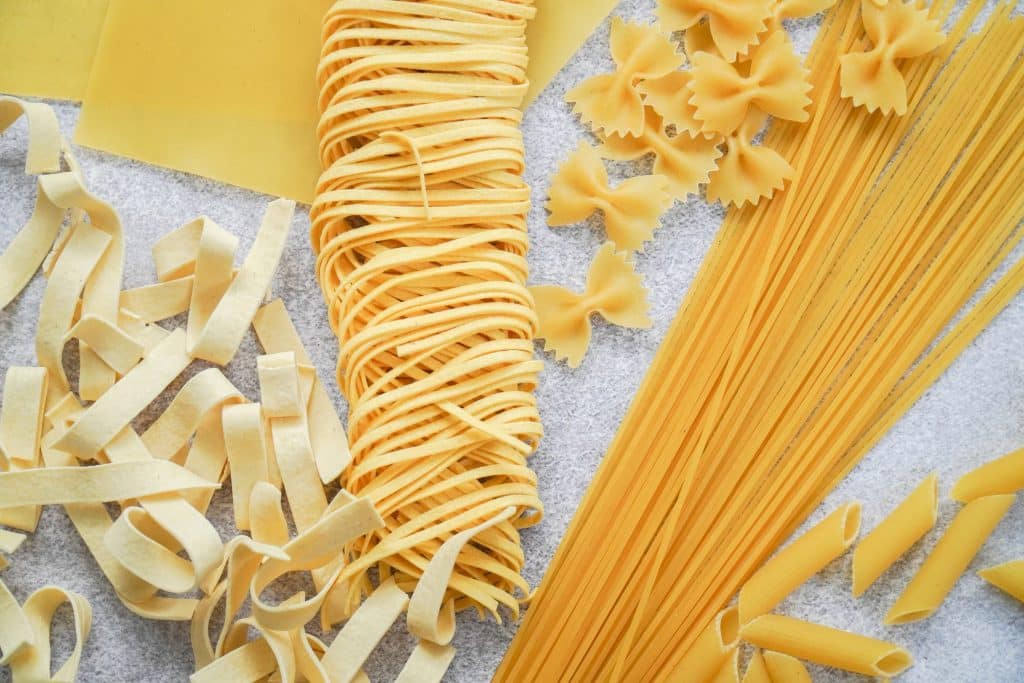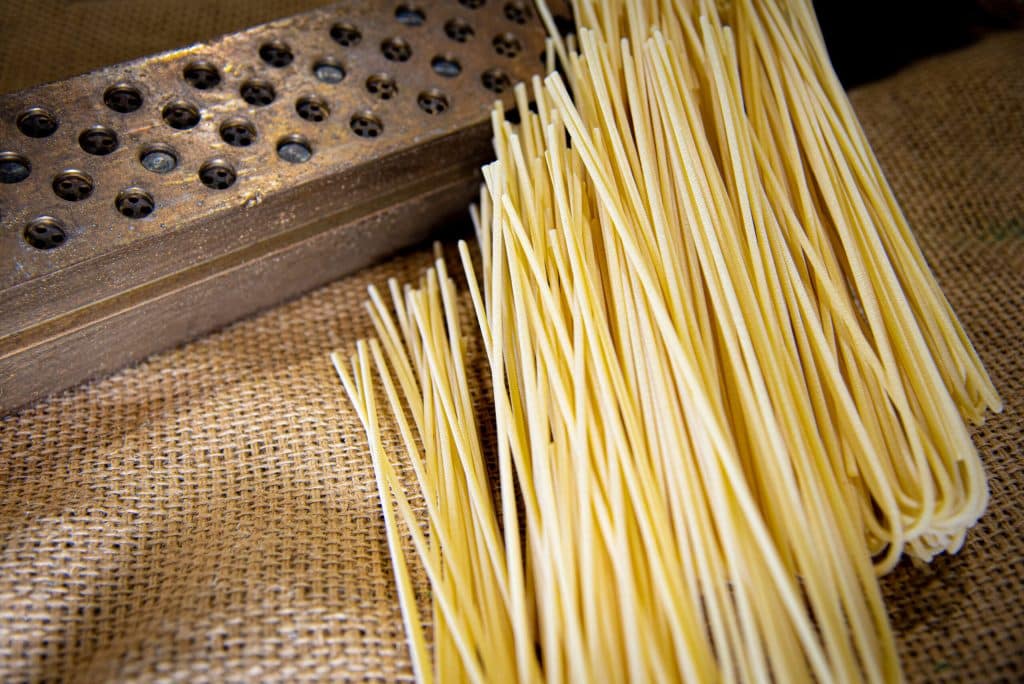Pasta is one of the world’s most favored and versatile foods. It’s become a staple food people of all ages and cultures enjoy.
With countless versions of pasta around the world, there’s always a pasta dish out there for everyone to enjoy.
Did you know there are more than 350 different shapes of pasta in Italy alone? Each with its own unique shape, texture, and flavor. That’s just mindblowing, right?

From spaghetti and meatballs, mac and cheese, carbonara, and fettuccine alfredo to lasagna, each pasta dish has its own unique twist that suits people’s tastes.
But pasta isn’t just beloved for its versatility and delicious taste. It also has a fascinating history that spans centuries and continents.

In my post today, I will share pasta’s fascinating origins and explore why it has become such a timeless classic in kitchens everywhere.
If you’re a pasta enthusiast (like me), you’ll love this one. So grab a fork and get ready to dig in!
Who Invented Pasta?
Although the exact origins of pasta are still a topic of debate, there are potential explanations that we can consider.
When people think of pasta, the name Marco Polo often comes to mind. It has been a popular legend for a long time that Marco Polo brought pasta to Italy from China during his exploration of the Far East in the late 13th century.

According to some experts, Marco Polo’s journal, “The Travels of Marco Polo,” mentions a plant or “pasta tree” that produced flour. The Chinese often used this plant to create a meal similar to barley flour.
The barley-like dish referenced in Polo’s journal was used to prepare various pasta-like dishes, including one called “Lagana” (lasagna).

However, since the original text by Polo no longer exists, the book relies heavily on retellings by various authors and experts.
This explains why other people believe that pasta actually originated in China. The Chinese made noodle-like food with wheat or rice flour as early as 3000 BC.
However, a few historians note that the tree described in the journal was actually a sago palm tree that produced starchy food. Polo simply pointed out the resemblance of the starchy sago to the pasta in his country of origin.
This suggests that pasta was already present in Italy, although it was not yet widespread, even before Polo arrived from China.
So now, historians argue that pasta was already a well-established dish in Italy long before Polo’s travels. Experts believe that nomadic Arab traders may have introduced early forms of pasta to the Western world.
During his travels around Sicily in 1154, the Arab geographer Al Idrisi documented a town called Trabia in his famous book “Tabula Rogeriana” or “The Book of Roger.”
In Trabia (a Comune in Sicily, Italy), they produced and exported large quantities of local long-stringed, flat pasta, known as “itriya” or spaghetti.

This local pasta was made from durum wheat and shipped to various regions, including Calabria and other Muslim and Christian lands.
This confirms that the Sicilians in the town of Trabia were already producing dry, long pasta before 1154. It also shows that Sicilians had already been eating pasta for years before Marco Polo brought pasta to Italy!
According to historical records, the Sicilians were known for their manufacturing, commercial, and maritime activities, including producing dry long pasta.
It’s believed that the Arabs introduced the technique of drying pasta to Sicily, but the Sicilians quickly surpassed their teachers in perfecting this art. In fact, it’s said that the Sicilians took the art of drying pasta to a whole new level.
Until now, the origins of pasta continue to be debated by historians. Nevertheless, pasta remains a beloved dish that has stood the test of time and is enjoyed by millions worldwide.

Whether it was the Chinese, Arabs, or Italians who first invented this delicious dish, one thing is certain: pasta has become an integral part of Italian cuisine and is a staple food for many cultures worldwide.







